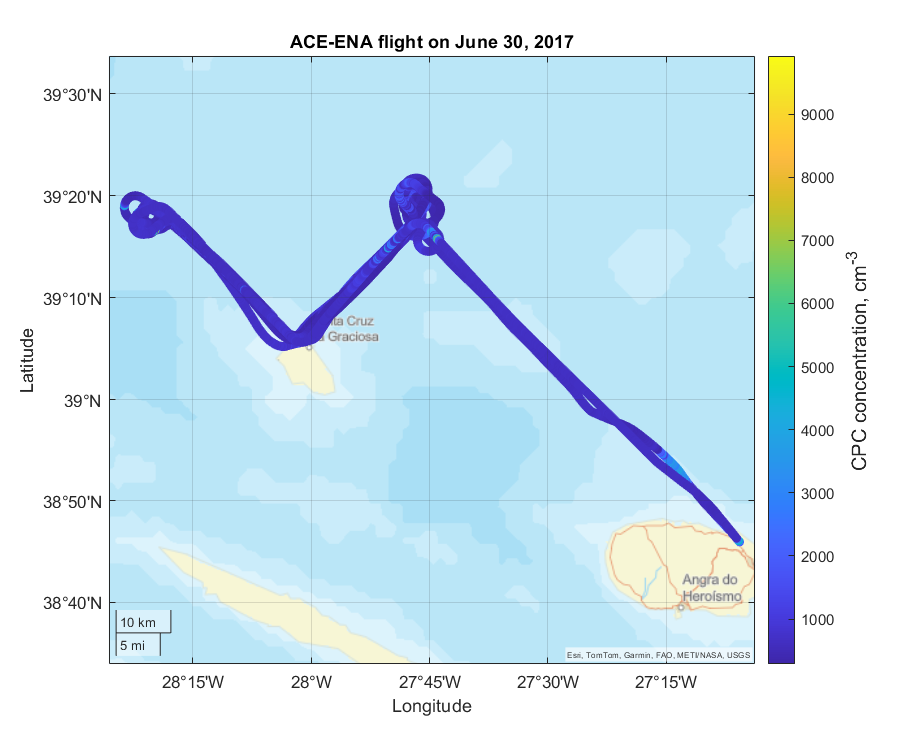
The Atmospheric Radiation Measurement (ARM) Aerial Facility (AAF) Merged value-added product (AAFMERGED VAP) has moved from evaluation to production. The VAP provides a set of frequently used measurements (e.g., atmospheric parameters, aerosol and trace gas concentrations) from the Gulfstream-159 (G-1) aircraft, which was the ARM User Facility’s main airborne research laboratory from 2010 to 2018.
This merged product allows users to quickly access the key measurements from nearly two dozen AAF products. The G-1 measurements are included in a single netCDF file.
AAFMERGED production data are now available for G-1 flights during the following ARM field campaigns and date ranges:
- Holistic Interactions of Shallow Clouds, Aerosols, and Land-Ecosystems (HI-SCALE) around ARM’s Southern Great Plains atmospheric observatory from April 25 through September 22, 2016
- Aerosol and Cloud Experiments in the Eastern North Atlantic (ACE-ENA) in the Azores from June 21, 2017, through February 19, 2018
- Cloud, Aerosol, and Complex Terrain Interactions (CACTI) near Córdoba, Argentina, from November 4 through December 8, 2018
- Green Ocean Amazon (GoAmazon2014/15) near Manacapuru, Brazil, from February 22 through October 4, 2014.
More information about AAFMERGED is available on the VAP web page.
Scientists can use the production data now. Additional AAFMERGED data will be released for the following campaigns:
- Biomass Burning Observation Project (BBOP), 2013
- ARM Cloud Aerosol Precipitation Experiment (ACAPEX), 2015
- ARM Airborne Carbon Measurements (ARM-ACME V), 2015.
Access the available AAFMERGED data in the ARM Data Center. (To download the data, first create an ARM account.)
To share your experience—such as how you use the data and how well they work for you—or to ask a question, contact AAF Science Lead Fan Mei.
To cite the AAFMERGED data, please use doi:10.5439/1999133.